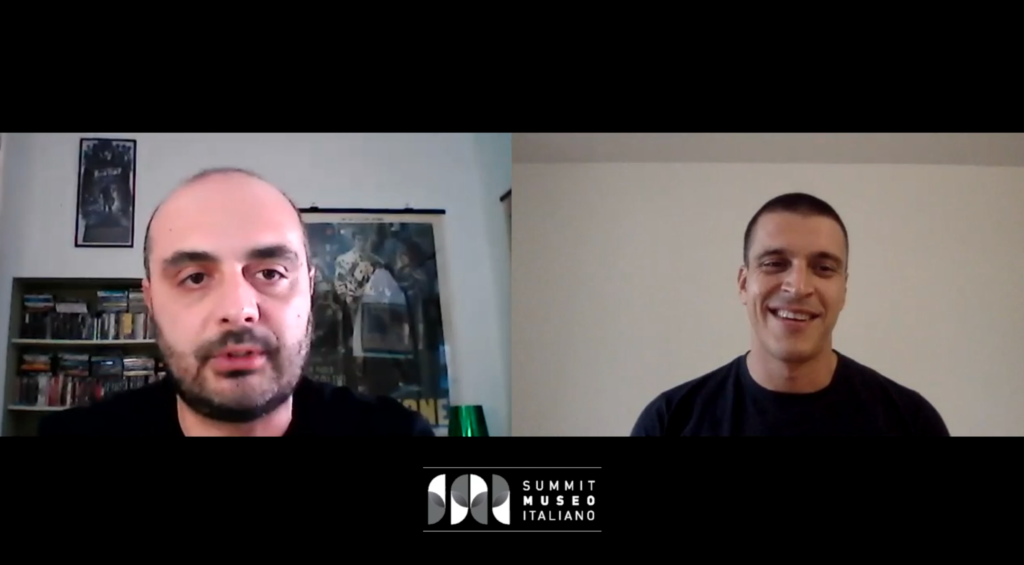The“Netflix of Culture” has been talked about for a while.
Unlike many pseudo-experts, I do not want to go into the merits of the idea or even the political entanglements of the “platform for enhancing in the world the Italian cultural offerings and in particular live performances.”
Already during the Italian Museum Summit, with Giuseppe Cosenza, we had begun to speculate on the possible developments of Dario Franceschini‘s creature, within a completely renewed model of museum business.
And that’s why, I strongly wanted to continue the analysis with him.
The name can make all the difference
Sometimes the good fortune of people, products and artists is in the name they bear.
If Farrokh Bulsara had not been called Freddie Mercury would he have been as successful?
And if Madonna Louise Veronica Ciccone had not changed her name to Madonna would she have had the same following?
Doesn’t the title Gulliver’s Travels work more than Travels into Several Remote Nations of the World, in Four Parts. By Lemuel Gulliver, First a Surgeon, and then a Captain of Several Ships. ?
The problem with the MiBACT-promoted platform for online enjoyment of cultural content lies in having preemptively “sold” it as the Netflix of Culture.
A name that has created misunderstandings and divisions among the factions of those against it regardless, the hyper-innovators and the doubters who stand in the middle.
A mistake, that of giving the platform a name, without first defining it:
- vision;
- mission;
- business model;
- products and services;
- payment model;
- partnership.
As if the writer first thinks about the title of the book and then its content, the director about the title of the film and then the screenplay, the entrepreneur first about the name to give to his company and then what business activity to do.
Content or container
A few months ago, I did a small survey on Linkedin to find out what content the paid online cultural platform should offer.
The results are surprising and nothing like Netflix and other similar platforms.
Users would like to find a virtual tour of the museum and its repository, virtual exhibitions, high-resolution artworks, in-depth features on specific museum themes and activities, films, dramas, documentaries and docufilms inspired by the museum, theater, music, dance, literature in the museum, e-books, video games and podcasts.
Also welcome would be a cultural newsletter, insights into the art market and major Italian fairs, and a space dedicated to Italian and European galleries.
So many things, perhaps too many and impossible all at once.
However, the survey shows a latent demand (to be verified) for special, exclusive and different content from the better-known platforms.
MiBACT’s platform will have to have its own identity, differentiate itself from content on the market and offer exclusive content.

For an Entrepreneurial and Transmedia Culture
MiBACT, with the paid online content platform project, becomes an entrepreneur.
So the parameters for evaluating the idea are primarily economic, as what is of interest is whether in the face of quality, unique and engaging content, there is a demand ready to pay a price for that content.
The total revenue generated must cover fixed and variable costs, and reach the break even point in at least three to five years.
For this to be realized it will be necessary to
design a unique content offering, protect it, so as to have a competitive advantage over competitors.
The online platform will have to strike the right balance between quality offerings and revenues such that it is sustainable and does not need public funding to cover losses as is the case with public TV.
Last but not least is theefficiency of the IT infrastructure.
Simple and functional, without the slowness or inefficiency of RaiPlay.
I agree with those who wrote that the recommendation system will have to be democratic and should not lock the customer into a bubble, limiting their choice to a few contents.
A system designed to encourage interaction between users and stimulate in my opinion a physical visit to the museum, attend a concert in person, or a play.
The platform could be integrated with the National Museum System, facilitating ticket sales and perhaps creating a circuit between Museums, Theaters and Concert Halls.
Without going into the specifics of the economic investment, what do you think is the future of this platform?
If you would like to share your opinion or learn more about it we are talking about it here:

